Reading Time: 5 Min
As lifestyles have changed during the past decades to become less active and more sedentary — accompanied by increased consumption of high-calorie food — more and more people now have to deal with excess weight and stubborn fat deposits that don’t want to leave their body as easily as they came.
If you’ve been having a hard time trying to burn the unwanted fat on your out-of-shape body through workouts and dieting, you must know how difficult it is to lose each and every pound.
For those of you who don’t have the time — and determination — to burn the stubborn fat around the waistline, there is the option of liposuction, a surgical procedure that takes an hour or two to rid you of the fat that’s been lodged in there for some time.
What is liposuction and how it works?
Liposuction, also known as lipectomy and lipoplasty, or simply lipo, is a cosmetic procedure intended to remove local fat on specific areas of the body to improve the shape and contour of the body.

The procedure is commonly performed to remove fat deposits on the abdomen, thighs, hips, love handles (flanks), back, and neck. A surgeon makes a small incision in the body to insert a thin tube called cannula and suction out the fat with the help of a suction machine to which the cannula is connected. Liposuction is done under either local or general anesthesia.
There are different types of liposuction techniques, which differ in terms of the method of treating the fat before removing it. Different liposuction methods are as follows:
- Tumescent liposuction: This is the most common type of liposuction in which a sterile solution consisting of salt water, anesthetic (lidocaine), and a drug called epinephrine, is injected in the target areas to swell and stiffen the area, and thus making it easy to remove the fat.
- Ultrasound-assisted liposuction (UAL): this liposuction technique makes use of ultrasonic energy to dislodge fat cells from their walls, making them easier to be suctioned. A new generation of this technique is called VASER
- Laser-assisted liposuction (SmartLipo): This minimally-invasive method employs high-intensity laser beams to break down fat cells before suction. It is best suited for small fat pockets and areas that need to have a tightened skin after the procedure.
- Power-assisted liposuction: In this liposuction technique, a vibrating cannula that moves back and forth is used and is suitable for people who need to get a larger amount of fat removed.
- Read More: 6 common myths about liposuction
- Also Read: Guide to fast recovery after liposuction
Liposuction in Iran
Surgery + Hotel + Visa
Transfer + Interpreter
Is liposuction a weight loss surgery?
As a company that facilitates medical tourism for people who want to undergo liposuction, and other procedures, in Iran, we are often asked: “how much weight will I lose after liposuction?”
Although it quite makes if you are curious as to how many pounds you would lose if you undergo a liposuction procedure, your question implies that you might think of liposuction as a weight loss option. If this is the case, you are completely wrong. Liposuction isn’t a weight loss procedure but a body contouring one.

Liposuction is aimed at sculpting the body to give it a more toned appearance. It does this by removing fat pockets that have deformed the shape of the body. Liposuction is a purely aesthetic procedure.
While the amount of fat removed in a liposuction procedure depends on your body and the extent of fat accumulation, no more than a certain amount of fat can be safely removed, without putting the patient at risk.
Currently, the maximum amount of fat that can be extracted safely in one liposuction procedure is 11 pounds (approximately 5 kilos and 5 liters). Some surgeons recommend even smaller amounts (6-8 pounds)
Given that removing a greater amount of fat in a single session is risky and will likely cause complications, it is recommended that patients divide the treatment into two sessions, at least one month apart. Several small liposuction procedures are safer than an extensive one.
It is important to note that good liposuction candidates are people who are at or near normal weight. Therefore, extremely overweight or obese people are not eligible for this procedure.
You May Like to See Before & After Photos of Liposuction
You May Like to See Before & After Photos of Liposuction
What is an alternative for weight loss candidates?
Now that you know liposuction can’t help you lose much weight as a fast solution to your excess weight, you might wonder whether there is a surgical option that is specifically aimed at extensive weight loss.
A weight loss surgery or bariatric surgery is exactly what obese people who want to lose a large amount of weight in a short time are looking for.

Last word
Although liposuction can greatly improve the appearance of your body by removing unwanted fat deposits, you should not look at it as a weight loss method. Liposuction is a cosmetic procedure and can’t help you with weight-related conditions.
After a typical liposuction procedure, you will lose no more than 6-11 pounds (3.5 – 5) kilograms of fat. If you are obese or fairly overweight, you’d better consider a weight loss plan or a weight loss surgery.
- Also Read: How to get rid of lumps after liposuction?
- Also Read: How to reduce swelling after liposuction?
Share this article:
Related Articles
Feel free to express your opinions or ask your questions regarding the article

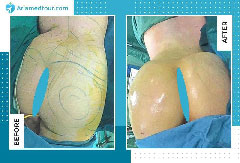


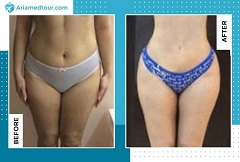
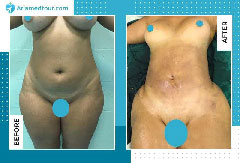
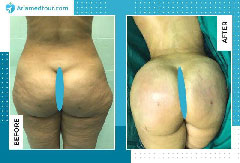



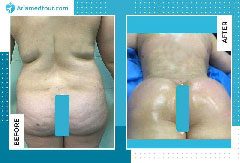




Very nice blog you covered all the things about liposuction surgery. Thank you so much.
Dear Mark,
We’re so glad that you found this article helpful. Good luck
Exelente informacion! Gracias
Dear Doris, Good luck